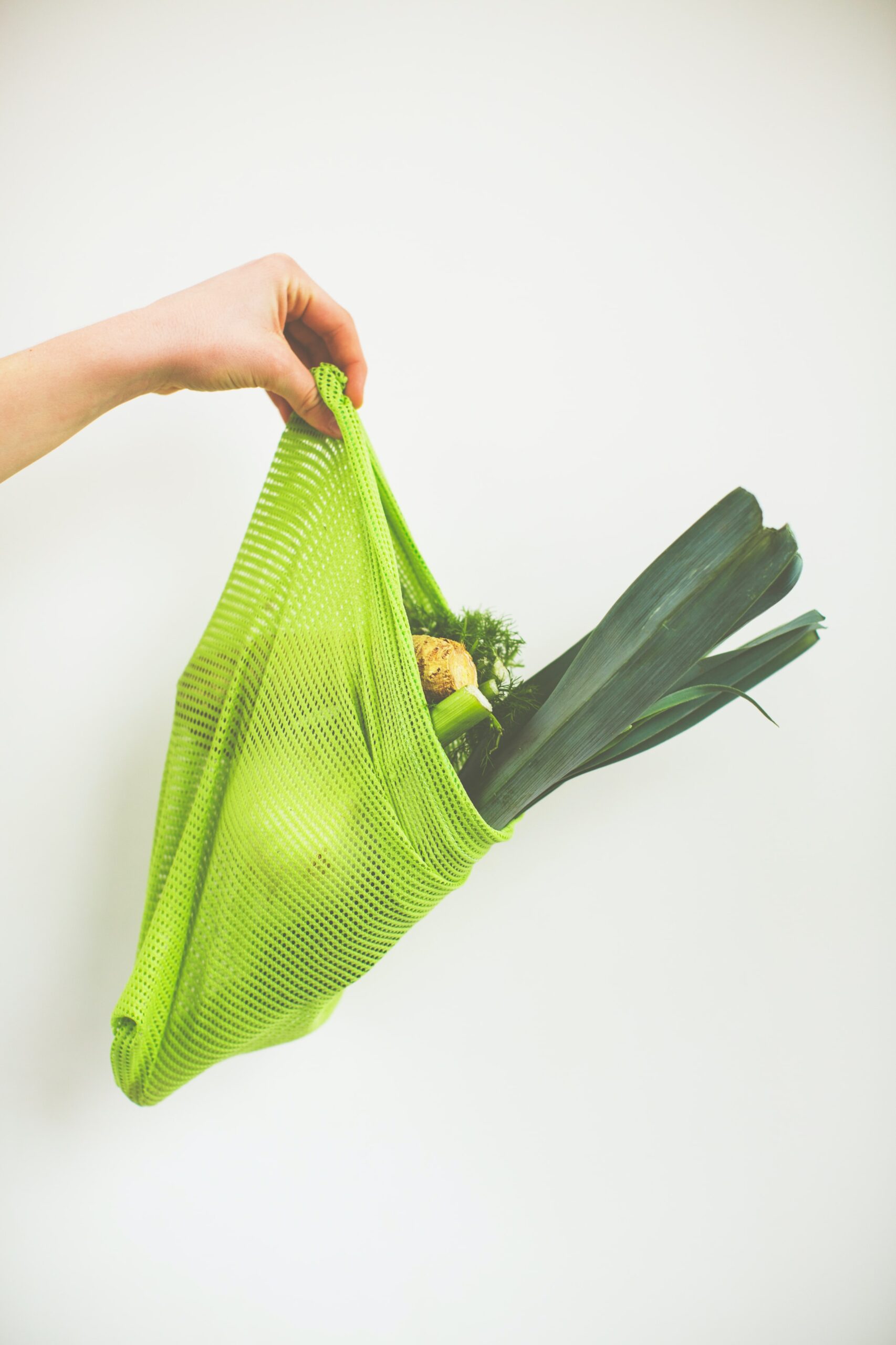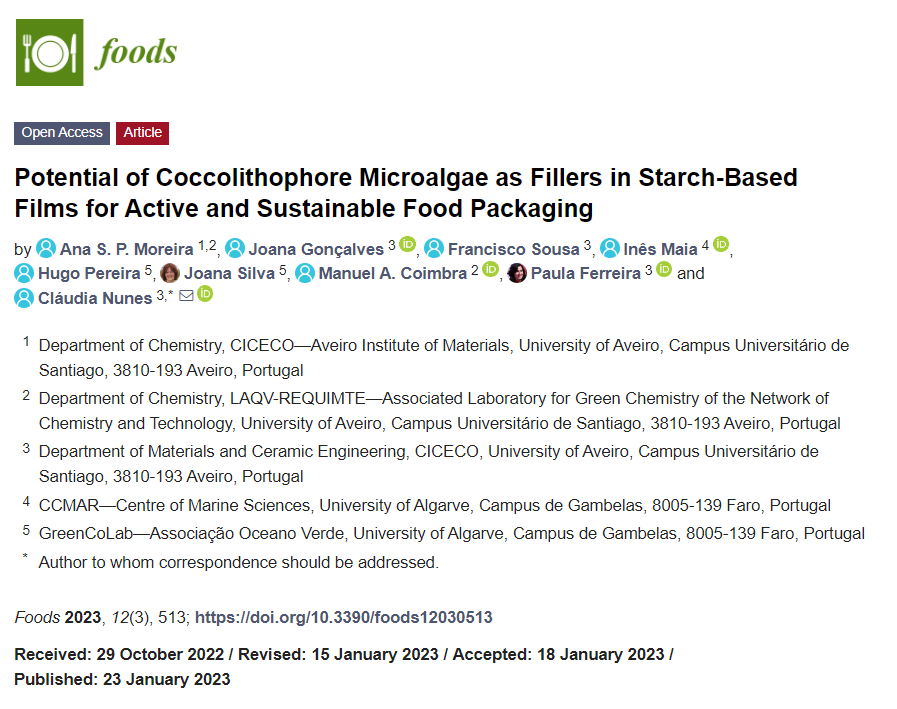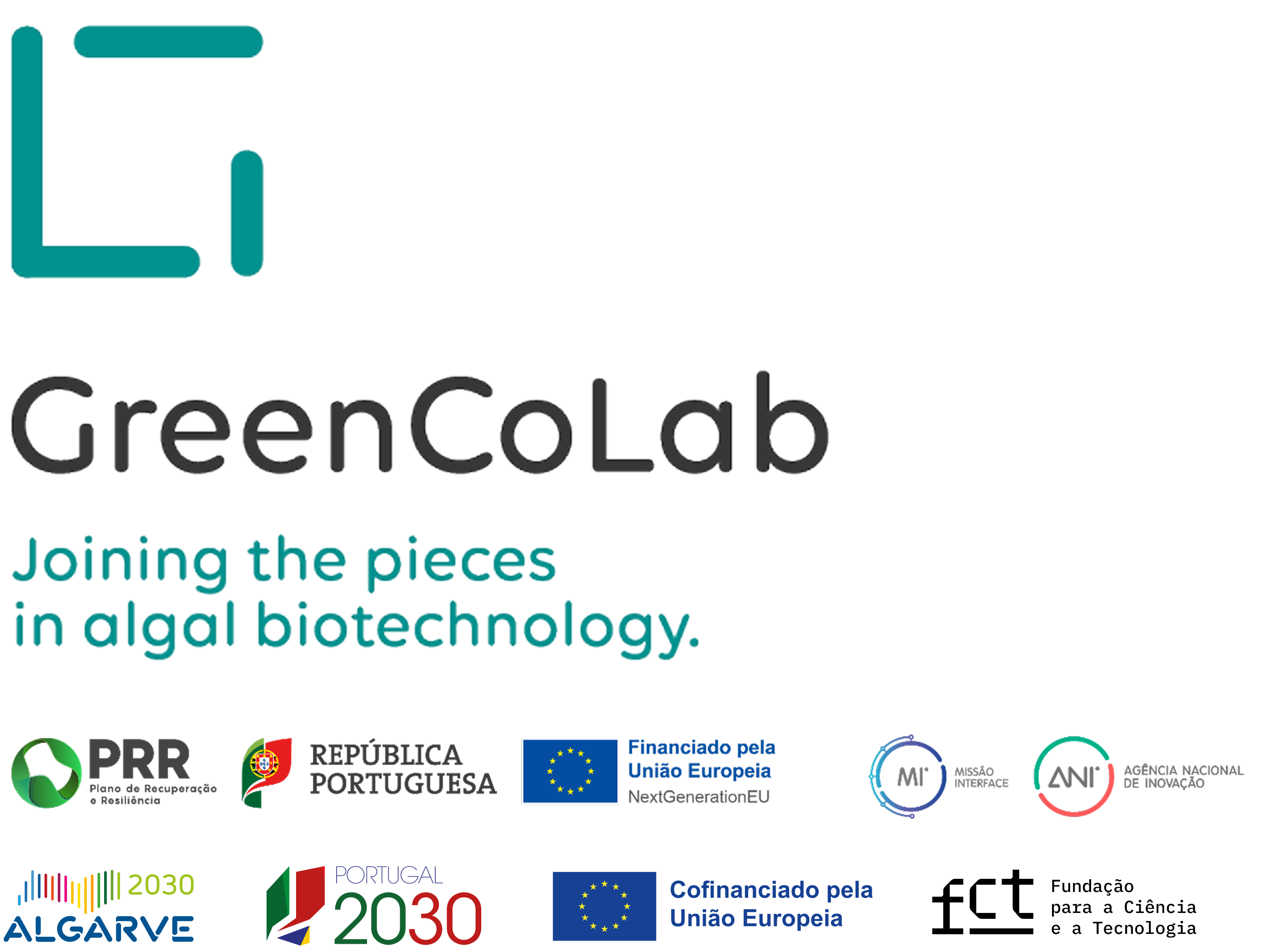

TITLE
Potential of Coccolithophore Microalgae as Fillers in Starch-Based Films for Active and Sustainable Food Packaging
JOURNAL
Foods
AUTHORS
Ana S. P. Moreira, Joana Gonçalves, Francisco Sousa, Inês Maia, Hugo Pereira, Joana Silva, Manuel A. Coimbra, Paula Ferreira and Cláudia Nunes
ABSTRACT
Coccolithophore microalgae, such as Emiliania huxleyi (EHUX) and Chrysotila pseudoroscoffensis (CP), are composed of calcium carbonate (CaCO3) and contain bioactive compounds that can be explored to produce sustainable food packaging. In this study, for the first time, these microalgae were incorporated as fillers in starch-based films, envisioning the development of biodegradable and bioactive materials for food packaging applications. The films were obtained by solvent casting using different proportions of the filler (2.5, 5, 10, and 20%, w/w). For comparison, commercial CaCO3, used as filler in the plastic industry, was also tested. The incorporation of CaCO3 and microalgae (EHUX or CP) made the films significantly less rigid, decreasing Young’s modulus up to 4.7-fold. Moreover, the incorporation of microalgae hydrophobic compounds as lipids turned the surface hydrophobic (water contact angles > 90°). Contrary to what was observed with commercial CaCO3, the films prepared with microalgae exhibited antioxidant activity, increasing from 0.9% (control) up to 60.4% (EHUX 20%) of ABTS radical inhibition. Overall, the introduction of microalgae biomass improved hydrophobicity and antioxidant capacity of starch-based films. These findings should be considered for further research using coccolithophores to produce active and sustainable food packaging material.



